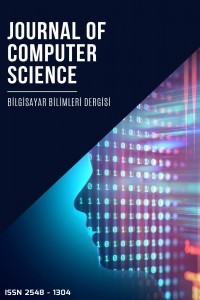Modeling and analysis of social networks based on Petri net theory
Modeling and analysis of social networks based on Petri net theory
With the increasing use of social networks recently, studies in this area have also increased. These studies are generally related to social network analysis and modeling. The social networks are modeled using graphs; however, graphs are static structures and cannot model the dynamic properties of social networks. Petri nets are a graphical structure and are used in the modeling of dynamic structures. In this study, Petri nets was used to model the dynamic behavior of social networks. The model obtained was analyzed in case of behavioral and structural properties and the major properties of the model were determined.
Keywords:
social networks, petri nets graphs,
___
- [1] M. Li, X. Wang, K. Gao, and S. Zhang, “A Survey on Information Diffusion in Online Social Networks: Models and Methods,” Information, vol. 8, no. 4, p. 118, 2017.
- [2] L. Liu, B. Qu, B. Chen, A. Hanjalic, and H. Wang, “Modeling of Information Diffusion on Social Networks with Applications to WeChat,” 2017.
- [3] T. Wang, J. He, and X. Wang, “An information spreading model based on online social networks,” Phys. A Stat. Mech. its Appl., vol. 490, pp. 488–496, 2018.
- [4] A. Guille, H. Hacid, C. Favre, and D. A. Zighed, “Information diffusion in online social networks,” ACM SIGMOD Rec., vol. 42, no. 1, p. 17, 2013.
- [5] T. Murata, “Petri Nets: Properties, Analysis and Applications,” Proc. IEEE, vol. 77, no. 4, pp. 541–580, 1989.
- [6] A. Pinna, R. Tonelli, M. Orrú, and M. Marchesi, “A petri nets model for blockchain analysis,” Comput. J., vol. 61, no. 9, pp. 1374–1388, 2018.
- [7] J. A. Barnes, “Class and Committees in a Norwegian Island Parish,” Hum. Relations, vol. 7, no. 1, pp. 39–58, 1954.
- [8] L. C. Freeman, “Social networks and the structure experiment,” Res. Methods Soc. Netw. Anal., pp. 11–40, 1989.
- ISSN: 2548-1304
- Yayın Aralığı: Yılda 2 Sayı
- Başlangıç: 2016
- Yayıncı: Ali KARCI
Sayıdaki Diğer Makaleler
Modeling and analysis of social networks based on Petri net theory
EFFECT of DIFFUSION CONSTANT on THE INTERFERENCE and PROBABILITY OF MOLECULE RECEPTION in MCvD
Esme IŞIK, İbrahim IŞIK, M. Emin TAĞLUK
HOW PRIVACY IS THREATENED FROM SOCIAL MEDIA COMMUNICATION?
Machine Learning based Emotion classification in the COVID-19 Real World Worry Dataset
Hakan ÇAKAR, Abdulkadir SENGUR
Saldırı Tespit Sistemlerinde Sınıflandırma Yöntemlerinin Kıyaslanması
